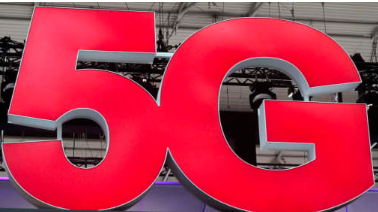5G to Come with Its Own Problems to Indoor Coverage Challenge
The fourth-generation (4G) LTE mobile service has had trouble penetrating some indoor office environ-ments. Unfortunately, fifth-generation (5G) comes along with its own complications to this coverage chal-lenge, says GlobalData.

The challenges to good indoor cellular coverage are structural. Newer, more environmentally friendly window glass is hard for wireless signals to penetrate. But, the most important reasons are more financial than technological.
In big venues like sports stadiums and airports, mobile operators have commonly deployed distributed antenna systems (DAS), which contain radio equipment from multiple operators. But, DAS are expensive to install and maintain. In big venues with big crowds, it is worth the expense for mobile operators. But for medium-sized venues such as an average office building with less than 20 floors, DAS is typically cost-prohibitive.
Ed Gubbins, Technology Analyst at GlobalData says: “Mobile network equipment vendors have, in the past five years, introduced low-power radio network solutions similar to DAS that they say are cost-effective for medium-sized venues. But these solutions (distributed small cells) have not been as good as DAS at providing support for multiple operators. That fact has impeded their adoption, since the people in any given office building usually get their mobile service from a mix of different providers.”
When 5G comes along, it will bring its own complications to the indoor coverage challenge. It will make greater use of high-frequency spectrum than 4G did. High-frequency spectrum does not penetrate walls as well as low- or mid-frequency spectrum, which could increase the need for indoor networks like DAS. However, some DAS cannot transmit over 5G’s high frequencies, and many DAS lack the ability to add antenna arrays needed for 5G.
Gubbins concludes: “DAS’ 5G hurdles put more pressure on distributed small-cell solutions to provide 5G. Yet, distributed small-cell solutions may not be cost-effective in very large venues, and they may not be as effective as DAS at supporting multiple operators. One of the primary drivers for enterprise networks will be machine-to-machine connections, adoption of which is likely to take time. What’s more, even when they’re adopted, they’re likely to be offered by a single provider – not helping multi-operator con-sumer service coverage much.”
在线留言询价

5G Needs New Approach to Security

Partnership to Develop 5G Base Station Chip

5G: Huawei India CEO says open to provide source code for screening to allay security concerns

US has a 'concerted strategy' to push allies to reject Huawei's 5G equipment: Eurasia Group
- 一周热料
- 紧缺物料秒杀
| 型号 | 品牌 | 询价 |
|---|---|---|
| CDZVT2R20B | ROHM Semiconductor | |
| BD71847AMWV-E2 | ROHM Semiconductor | |
| TL431ACLPR | Texas Instruments | |
| RB751G-40T2R | ROHM Semiconductor | |
| MC33074DR2G | onsemi |
| 型号 | 品牌 | 抢购 |
|---|---|---|
| IPZ40N04S5L4R8ATMA1 | Infineon Technologies | |
| BP3621 | ROHM Semiconductor | |
| ESR03EZPJ151 | ROHM Semiconductor | |
| BU33JA2MNVX-CTL | ROHM Semiconductor | |
| STM32F429IGT6 | STMicroelectronics | |
| TPS63050YFFR | Texas Instruments |
- 周排行榜
- 月排行榜
AMEYA360公众号二维码
识别二维码,即可关注
























